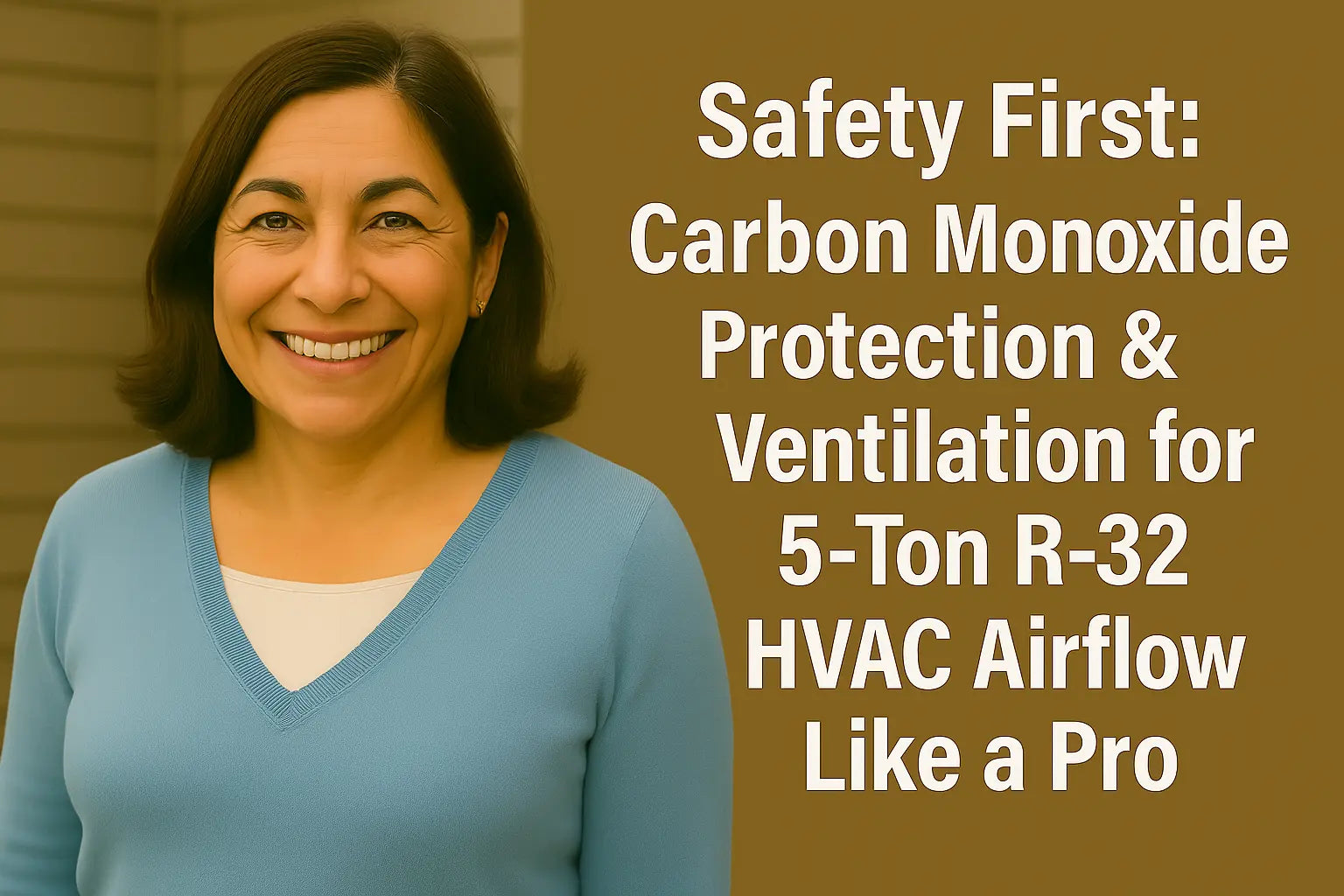Hey There from Samantha 💁
Hello, safety champions! Samantha here, ready to tackle a topic that’s absolutely critical for your peace of mind: carbon monoxide (CO) safety and proper ventilation for your 5‑ton R‑32 AC and gas furnace system. CO is the silent, odorless threat lurking in common household appliances—but with smart strategies, proactive checks, and proper maintenance, you can lock down your home's defenses.
In this guide, we'll dive into the science of CO production, essential venting best practices, industry-standard alarm placement, and early warning symptoms. Plus, I’ve got smart tips to help you create a safer, fresher indoor environment.
And if you're ready to invest in R‑32 systems that align with these safety standards, check out my trusted picks at The Furnace Outlet’s 5‑Ton R‑32 AC & Gas Furnace collection. Their equipment makes safety a priority—just what every homeowner needs.
Let’s get serious about safety—because every breath deserves protection. 💨🔥
1. Why CO Safety Should Be Top Priority
-
CO is invisible, odorless, and deadly—just 100 ppm can cause illness after hours; 800 ppm can kill quickly. The CDC breaks it down clearly in their CO poisoning overview.
-
The EPA reports over 50,000 annual emergency visits and about 430 deaths due to home CO exposure—proof that vigilance matters.
-
Fuel-burning appliances, especially high-capacity ones like your 5‑ton R‑32 system, pose CO risks if venting is compromised.
2. How CO Forms in Your Furnace
Your gas furnace is designed to burn cleanly. But issues like cracked heat exchangers, improper draughting, or blocked combustion air can lead to incomplete combustion, producing CO instead of harmless CO₂. The National Institute for Occupational Safety and Health (NIOSH) explains this mechanism clearly in their CO exposure fact sheet.
3. Ventilation Best Practices
🔧 Combustion Air Requirements
Furnaces need ample fresh air. The National Fuel Gas Code (NFPA 54) suggests at least 50 ft³ of combustion air per 1,000 BTU/hr for unconfined spaces. In tight or sealed homes, a dedicated outside air intake is mandatory.
🔧 Sealed Combustion Systems
These systems are safer and more efficient because they draw air directly from outside and expel exhaust through a dedicated vent. The International Mechanical Code mandates sealed ventilation for high-efficiency furnaces.
🔧 Exhaust Venting Protocols
Condensing R‑32 systems typically require PVC or polypropylene venting with proper pitch, slope away from the house, and clear outlet areas. The International Mechanical Code (IMC) has detailed installation specs.
🔧 Combustion Air Bathroom Fan Test
To ensure your furnace’s venting integrity, test for negative pressure during high exhaust fan use. The National Fuel Gas Code provides a step-by-step for this draft test.
4. CO Detector Placement
-
Install UL 2034-certified CO alarms in living areas, bedrooms, and near gas appliances.
-
Add HVAC-integrated CO sensors (UL 2075) near your furnace or ductwork for proactive detection.
-
Position them about 5 feet above the floor or ceiling level, as CO mixes with air rapidly— EPA provides excellent placement guidance.
5. Pro Maintenance = CO Safety
-
Annual pro inspection — combustion air check, burner cleaning, heat exchanger scan using a combustion analyzer.
-
Combustion analysis — testing CO/CO₂, O₂ to ensure efficient, clean burning.
-
Inspect & replace cracked pipes or vent lines.
-
Keep exhausts clear—snow, leaves & nesting critters can block the system.
The National Fire Protection Association (NFPA 54) mandates regular inspections to maintain safe operation.
6. DIY Safety Checks
-
Monthly airtight check of CO alarms.
-
Inspect vent pipes for snow, nests, or debris.
-
Pay attention to any unusual burner pop sounds or smells.
-
Conduct a draft test at startup with a match or smoke stick—anything prompting reverse airflow means alarm time.
7. CO Logbook and Record Keeping
Keep a maintenance journal noting CO readings, alarm tests, service dates, and vent inspections. The Department of Energy provides a helpful HVAC maintenance checklist to guide homeowners.
8. Handling a CO Alarm Emergency
If your CO alarm sounds:
-
Evacuate immediately—don’t wait.
-
Open all windows & doors to ventilate.
-
Call 911 and your gas utility.
-
Do not operate gas appliances until a professional confirms it's safe.
Remember: CO alarms save months—or even years—of risk by providing critical early warning.
9. Advanced Air Quality Upgrades
-
Sealed-combustion furnaces with high AFUE preserve air quality.
-
Add an HRV or ERV system for good ventilation without energy loss. The RESNET standards guide homeowners through efficient whole-house ventilation.
-
Use smart CO detectors, often Wi-Fi enabled, for remote alerts and peace of mind.
🌸 Samantha’s Outro
Congrats, you’ve just completed the ultimate safety training on CO protection and ventilation for your 5‑ton R‑32 system 💪. Taking safety seriously ensures your comfort doesn’t come at the cost of your well-being.
If you're in the market for top-tier R‑32 HVAC systems with ventilation-conscious design, visit The Furnace Outlet’s 5‑Ton R‑32 Collection. Their lineup offers efficiency, safety, and peace of mind—all curated for smart, safety-first homeowners like you.
Want even more troubleshooting and installation tips for your 5-ton R-32 systems? Visit my ultimate guide right here!
And don’t hesitate: build that CO logbook, check those vents, and test those alarms monthly. Want a printable checklist or help picking a pro-certified human? I’ve got your back. Thanks for putting your family’s safety first—you’re already nailing it! 💖
Stay safe, breathe easy, and enjoy peace of mind—until next time!
— Samantha, Home Comfort Advisor







